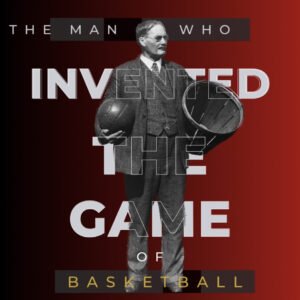How Much Does A Basketball Weigh? AAU To Pro Dimensions
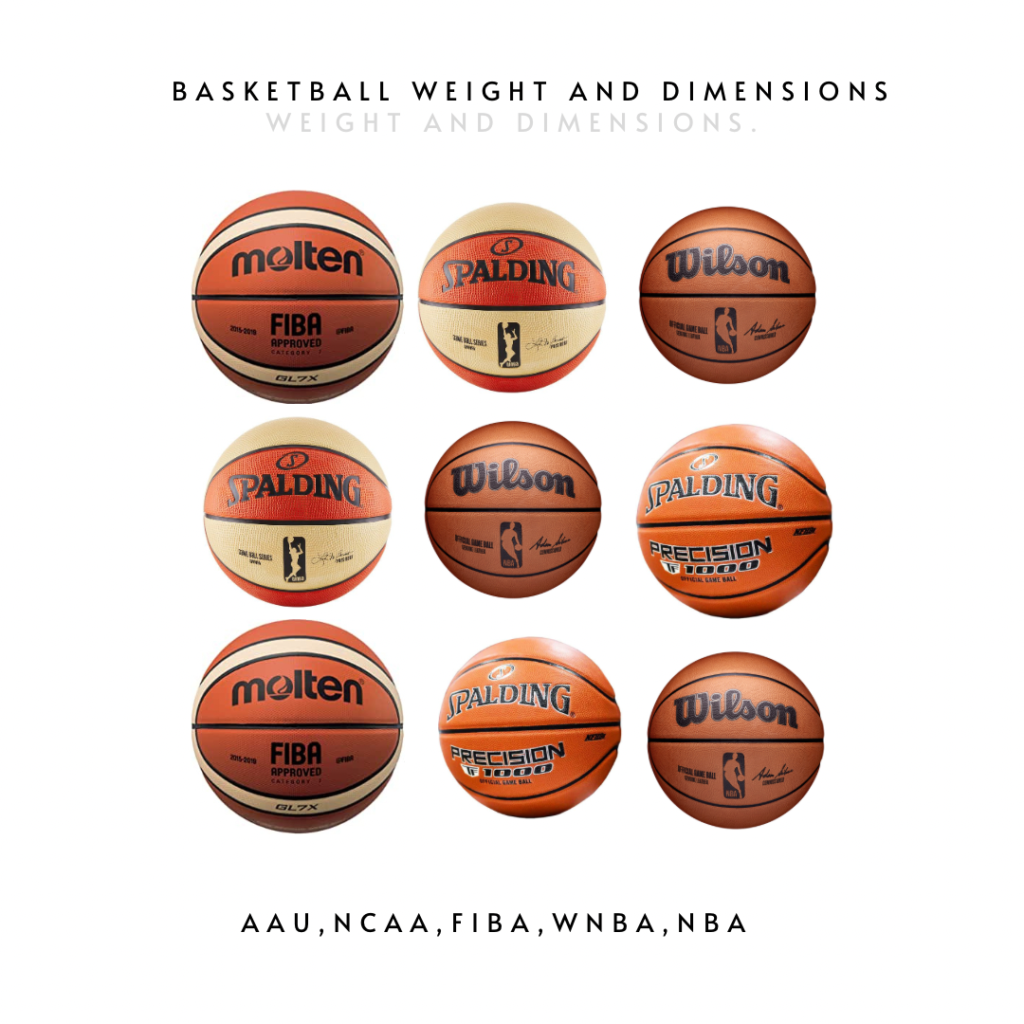
Casual sports fans and basketball enthusiasts alike may wonder how much does a basketball weigh, being unfamiliar with its exact dimensions. In direct contrast to many other team sports, varying sizes and circumference of a basketball incorporated in play can be used. The basketball weight and size depends on the specific level of play, league, or organization. Other factors such as age or ability can also dictate the best basketball weight and size to use.
In addition to answering how much does a basketball weigh, we’ll also provide an answer to how much does a fully inflated basketball weighs, how much does a basketball weigh in grams and how much does a basketball weigh in lbs.
How much does a basketball weigh in the NBA?: Modern Era Dimensions (1979-present day)
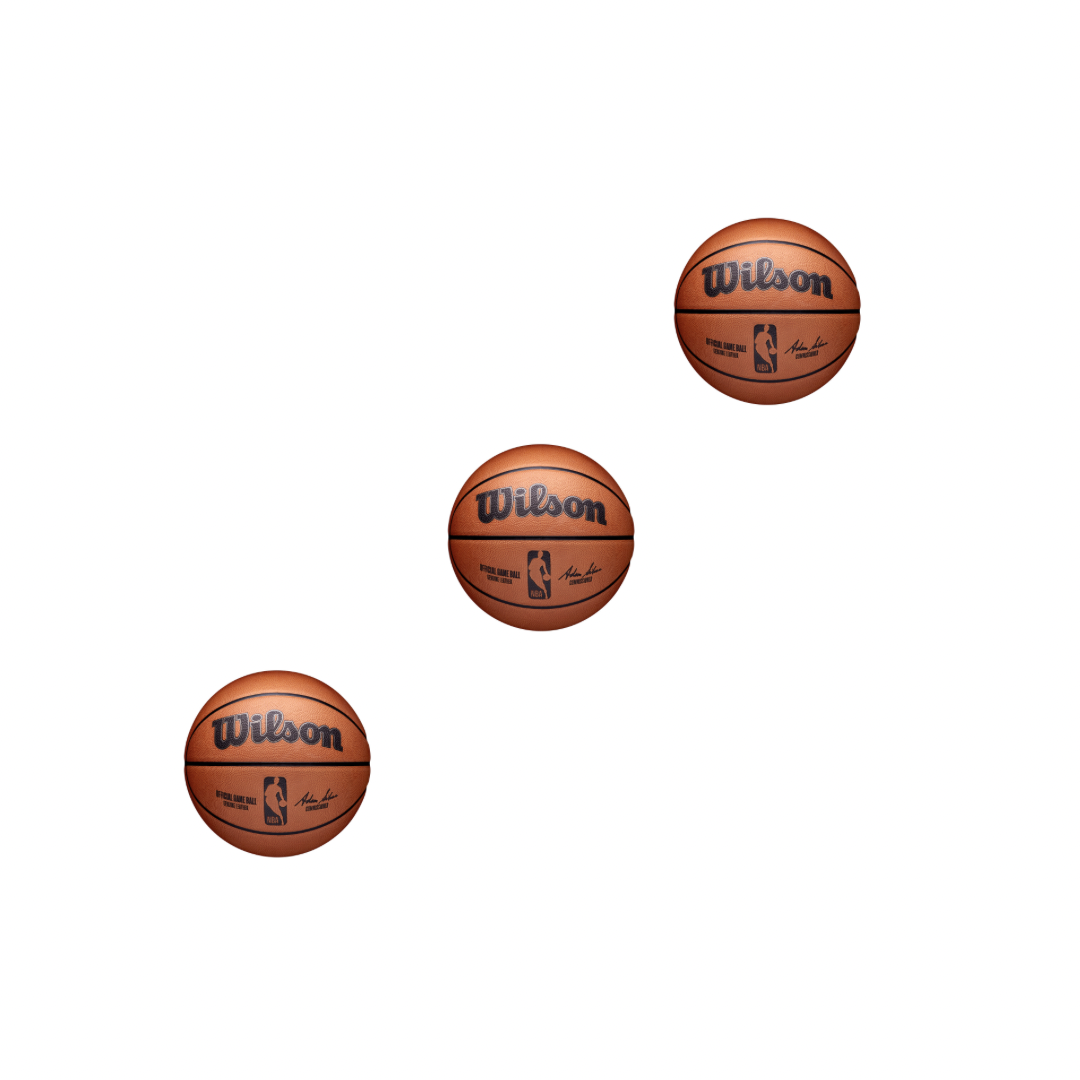
The current NBA basketball weight and size is dictated by FIBA regulations, which have been in effect since 1979. The circumference of a basketball in the NBA must be 29.5 inches, while the diameter of a basketball can vary from 9.43 inches to 9.51 inches.
How much does a NBA basketball weigh? The weight of a basketball is usually 623.69 grams, or about 1.4 pounds, while being inflated at a psi ranging from 7.5 to 8.5. These dimensions are also the general standards implemented in both men’s high school and men’s collegiate basketball throughout the United States.
NBA Official Game Ball
The Wilson NBA Official game ball replaced Spalding as the official basketball of the NBA. It features longer lasting air retention, genuine leather, and official NBA branding.
March Madness NCAA Game Ball
Wilson NCAA EVO NXT is the official game ball of March Madness. This ball is made for long range shooters. It features a micro touch composite cover, enhanced grip and moisture management.
Weight and Dimensions of an NBA Basketball – Pre-1979
Before 1979, the NBA basketball size, while many times mirroring the modern-day dimensions, would also vary. At one point, the league used balls that had a circumference of just 15 inches. That’s roughly half the size of the modern NBA standard. Another interesting aspect of the history of basketball dimensions in the NBA is that before 1979, many NBA players would routinely practice with smaller basketballs and then gradually progress up until they reached the official NBA size.
From 1979-1983, they would continue to experiment with different-sized basketballs for indoor and outdoor use. But would eventually convert exclusively to the standard 29.5-inch circumference size starting in 1984.
Related Articles:
Weight and Dimensions: WNBA Ball Size
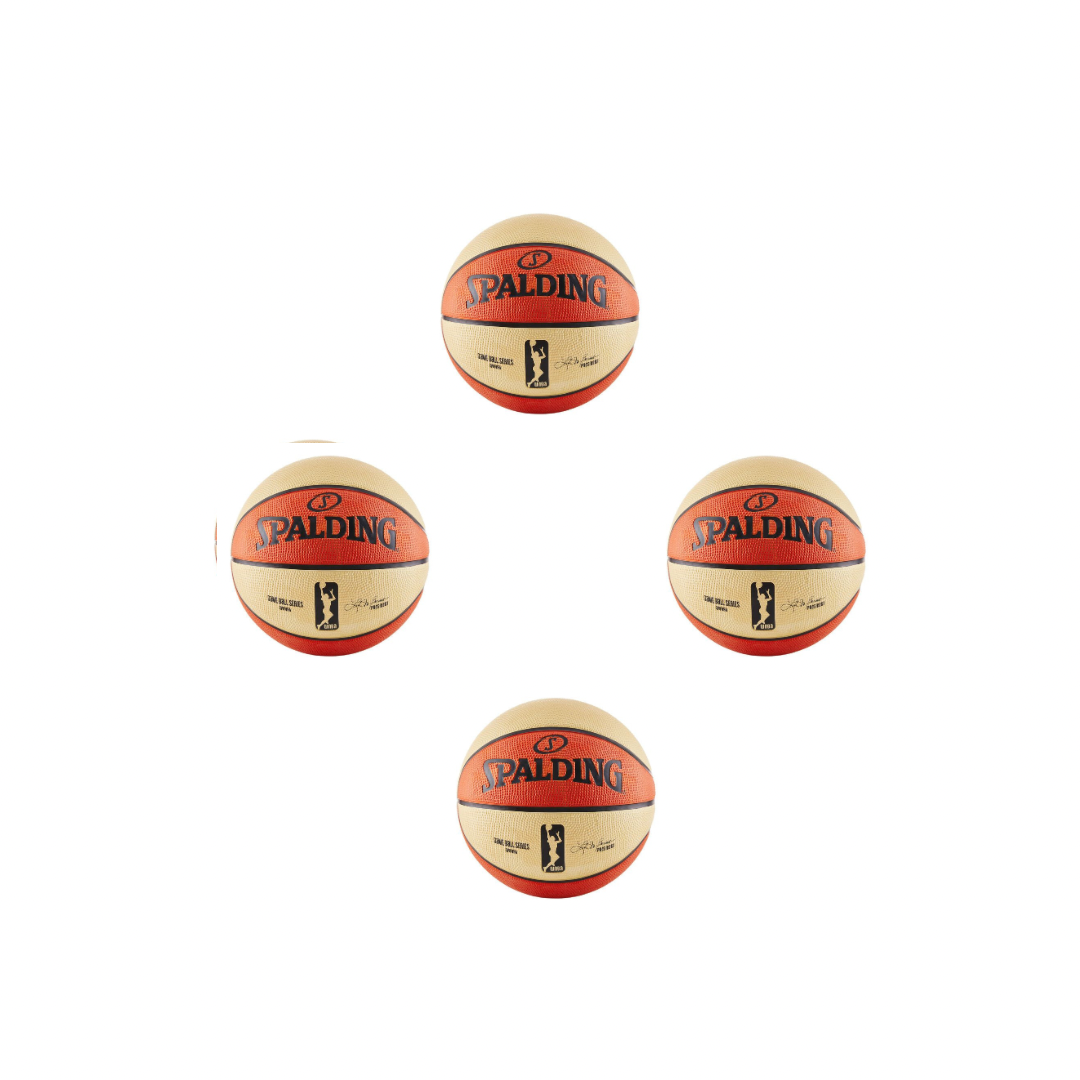
How much does a basketball weigh for the WNBA? When discussing the WNBA ball vs NBA ball, unlike the NBA, the dimensions of the basketball used in the WNBA have remained consistent since its beginning during the 1997 season. It has a circumference of 28.5 inches. The diameter ranges from 9.07 inches to 9.23 inches. The WNBA weight of basketball comes in at 566.99 grams, or about 1.3 pounds, while being inflated at a psi usually ranging from 7.5 to 8 psi.
As with the men’s basketball dimensions, the WNBA basketball size is the general standards implemented in both women’s high school and women’s collegiate basketball throughout the United States.
The Wilson EVO NXT is the Official WNBA game ball. It features enhanced grip, moisture management, less effort need to put spin on shot, soft touch and official WNBA branding.
Modern FIBA Basketball Dimensions
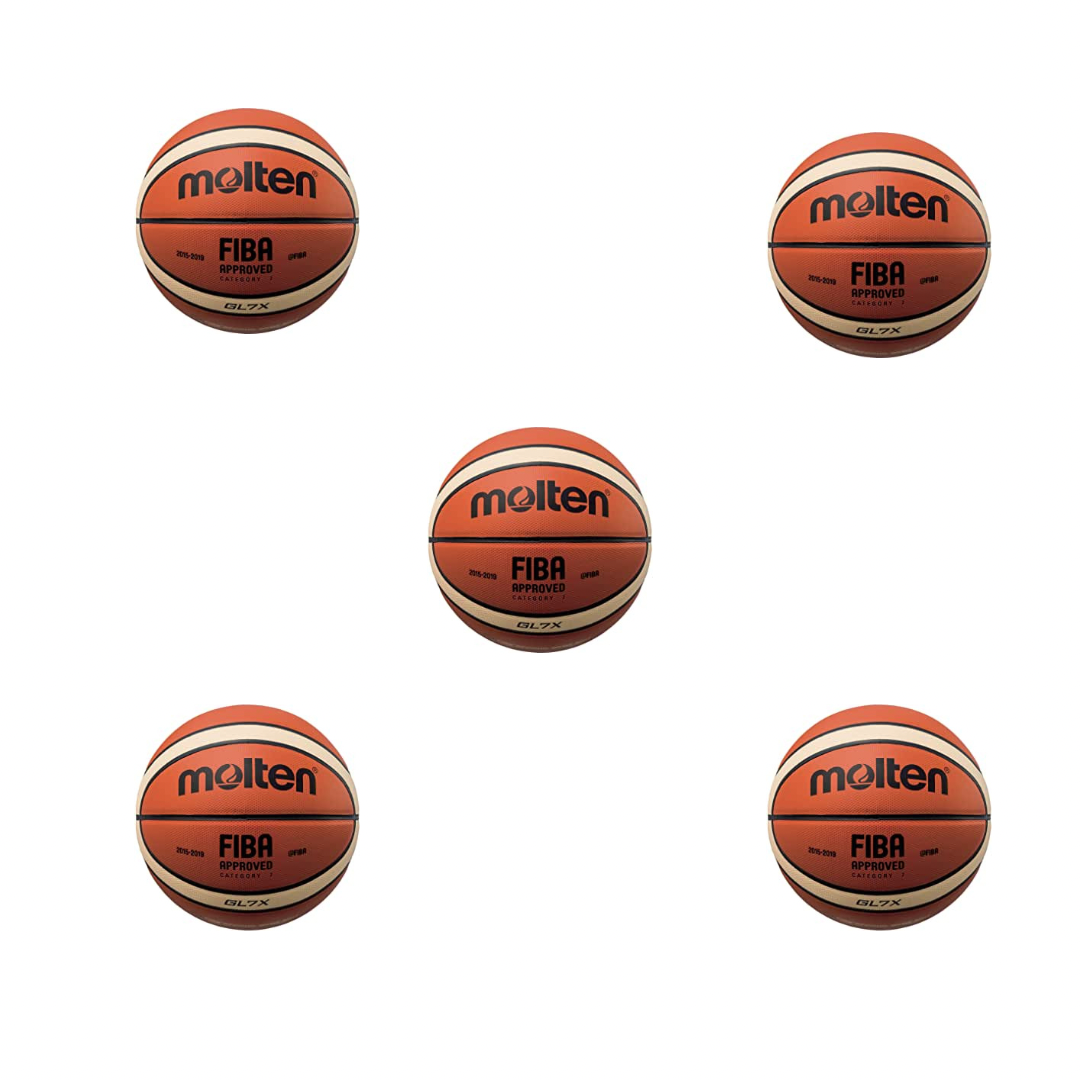
While the NBA has consistently maintained the original FIBA basketball size since 1979, FIBA has since modified its basketball dimensions slightly for both men’s and women’s competition. The circumference of a men’s basketball is 30.5 inches, while the circumference of a women’s basketball is 29 inches. However, there is some variation in the reported weights of the FIBA basketballs.
How much does a basketball weigh in FBA play? Some sources report that the ball weighs the same as the NBA and WNBA basketballs, while others report that they are a little lighter. Because of the massive size of FIBA and how many countries and continents it regulates, it is probable that basketball sizes and dimensions probably vary slightly around the world.
The Molten BG5000 is the Official Game ball for FIBA World Championships and The Olympics. This ball features natural leather properties, optimum grip, less slippery and a foam concentration that makes the ball easier to handle and softer.
AAU Basketball Size
AAU (Amateur Athletic Union) basketball has become a very popular outlet throughout the United States, far surpassing middle school and high school basketball in popularity. Although there are many different divisions and levels of play, two primary basketball sizes are used, a 28.5-inch circumference and a 29.5-inch circumference ball. Boys typically use a 28.5-inch circumference ball from grades 1-6 and then switch to a 29.5-inch circumference ball from 7th grade on up.
Girls typically use a 28.5-inch circumference ball throughout all levels of play. Some AAU leagues are organized by age and not grade, resulting in some overlap and variations in the ball size used.
Spalding’s Precision TF-1000 is the official ball for AAU basketball. This ball features a game ready grip, superior control, a natural feel and is built for performance.
Size and weight of basketball categorizations
Basketballs are also categorized into four main sizes numbered from 4-7 that correspond to different levels of play, as well as 2 other smaller specialized basketball sizes.
SIZE 7 – Basketballs in size 7 correspond to men’s pro basketball, collegiate, and high school level play, from 15 years old on up. The circumference of a size 7 basketball is 29.5 inches, and the basketball weight in grams is usually about 623.69.
SIZE 6 – Basketballs in size 6 correspond to women’s pro basketball, collegiate, and high school level play, from 12 years old on up. The circumference of a size 6 basketball is 28.5 inches, and the weight is usually about 566.99 grams. This is also a suitable basketball size for boys in the age range of 12 to 14.
SIZE 5 – Basketballs in size 5 typically correspond to youth basketball for both boys and girls in the age range of 9 to 11. The circumference of a size 5 basketball is 27.5 inches, and the weight is about 481.94 grams.
SIZE 4 – Basketballs in size 4 correspond to competition for young children in the age range of 5 to 8. The circumference of a size 4 basketball is 25.5 inches, and the weight is about 396.89 grams.
SIZE 3 – Basketballs in size 3 are a specialized/hybrid size that corresponds to competition for young children in roughly the same age range as size 4, between 5 and 8 years old. Size 3 basketballs are often referred to as “mini” basketballs and have a circumference of 22 inches and a weight of 283.49 grams.
Many individuals may wonder why sizes 3 and 4 of basketballs cover the same age range of children despite possessing different dimensions. Size 4 is probably more appropriate for children who have already played basketball for a couple of years and are quickly developing into proficient basketball players. Size 3 is more effective for children who are being introduced to the game for the first time or who have very little experience.
SIZE 1 – Basketballs in size 1 are another specialized/hybrid size that is commonly used for very young children in the age range of 2 to 4. Commonly known as “micro-mini” basketballs, they have a circumference of 16 inches and a weight of 226.796 grams.
The Most Common Sizes and Weight of basketball
So, how much does a basketball weigh? While many different basketball sizes are used throughout the world, the two most common sizes are the 28.5-inch circumference ball and the 29.5-inch circumference ball.
The 28.5-inch circumference basketball is the standard size used by female basketball players and typically weighs 566.99 grams, whereas the 29.5-inch circumference basketball is the standard size used by male basketball players and typically weighs 623.69 grams. Generally, younger children should use a smaller, specialized basketball size by age, which can better assist in overall development.
LEGAL DISCLAIMER
Squad, LLC is a participant in the Amazon Services LLC Associates Program, an affiliate advertising program designed to provide a means for sites to earn advertising fees by advertising and linking to amazon.com. Squad, LLC also participates in affiliate programs with ShareASale, Clickbank, CJ Affiliates and other sites. As an affiliate Squad, LLC earn from referring traffic, business and qualifying purchases.


